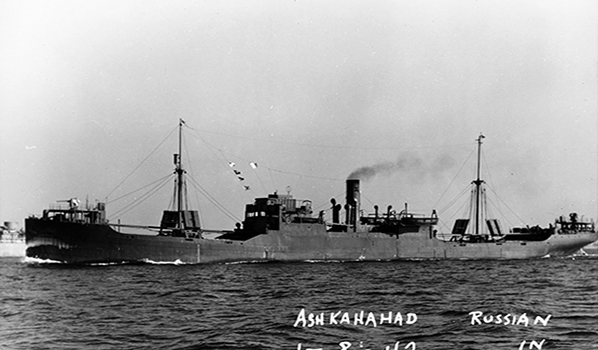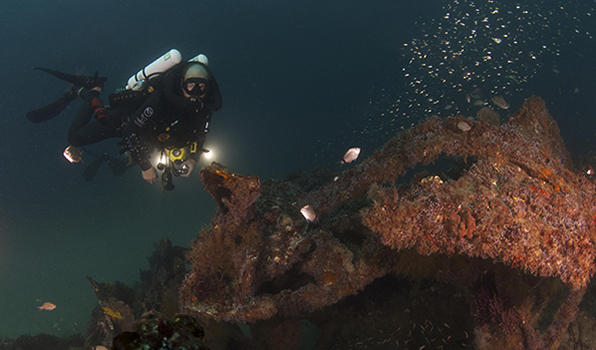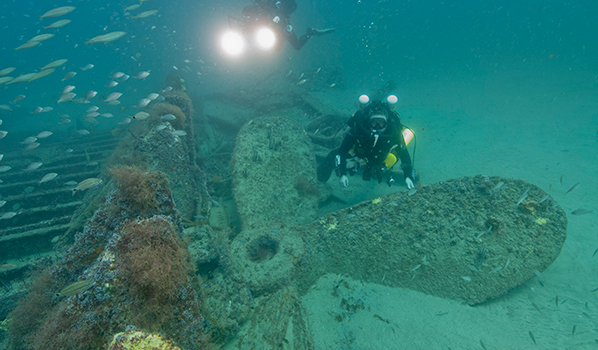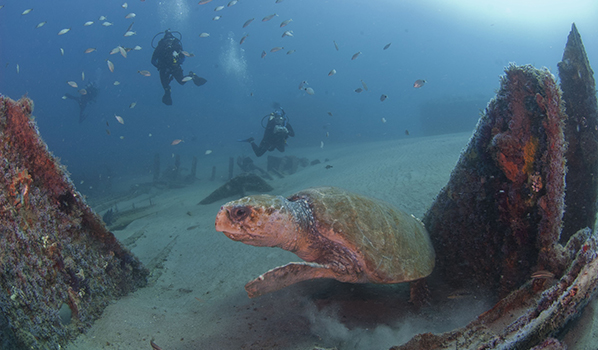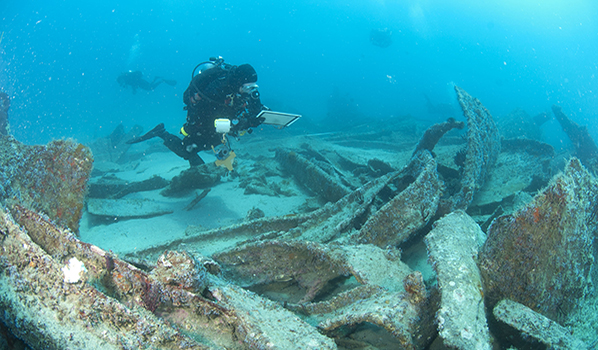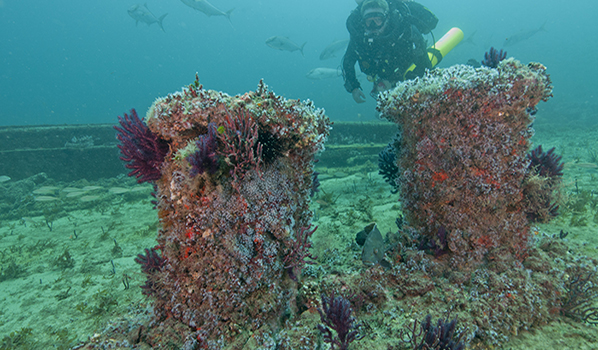Ashkhabad
Ship Stats
Location: 34°22'53.04"N, 76°21'54.00"W (34.38140, -76.36500)
Depth: 55 feet
Vessel Type: Tanker
Length: 401 feet Breadth: 52.3 feet
Gross Tonnage: 5,284 Cargo: Ballast
Built: 1917, Harland and Wolff Ltd., Glasgow, Scotland
Hull Number: Unknown Port of Registry: Odessa, Russia
Owner: (Last) Sovtorgflot - Soviet State Shipping Line, 1935-1942
Lloyd's Register Details: One steel deck, expanded from 3,148 original gross tonnage to 5,284, triple expansion engine
Former Names: Dneprostroy (Soviet Shipping Line, 1935-1938); Kutais (Soviet Shipping Line, 1934-1935); Mistlely Hall (Dunn C.G. and Co., 1927-1934); Aldersgate (Dillon H.W. and Sons, 1925-1927); Milazzo (Italian merchant fleet, 1919-1924); and War Hostage (Shipping Controller, 1917-1919)
Date Lost: April 30, 1942
Sunk By: U-402 Survivors: 47 of 47 survived (0 dead)
Data Collected on Site: Still and video photography; high resolution multibeam; full site plan
Significance: Casualty of World War II's Battle of the Atlantic
Wreck Site
The site of the Russian tanker Ashkhabad sits in only 55-60 feet of water. The site consists of a large, widely dispersed scatter due to the demolition and wire dragging conducted by the U.S. Navy and Coast Guard as part of a program to clear vessel remains in shallow water that posed a hazard to navigation. As a result, the Ashkhabad's remains are characterized by low relief (the highest point being the tops of the three massive boilers), distributed along a flat, sandy bottom.
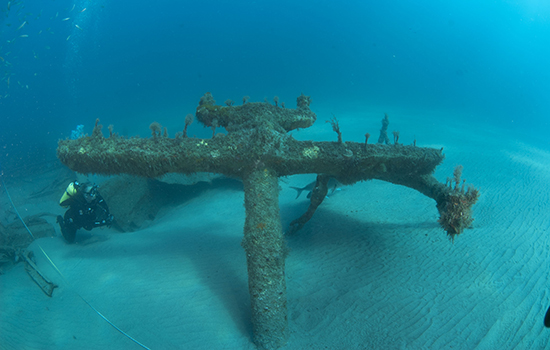
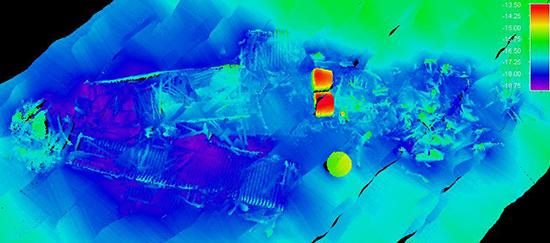
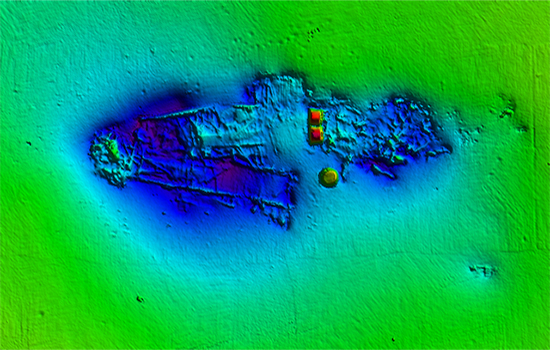
Historical Background
Ashkhabad was originally named War Hostage and was built during World War I as an A-class standard cargo ship. Following the war it was transferred several times and from 1919 to 1938, its name changed six times. The main port for Ashkhabad was Odessa, Russia.
In April of 1942, Ashkhabad was traveling empty from New York to Cuba, escorted by the ASW trawler Lady Elsa. They were running a zig-zag course as ordered in an effort to avoid U-boat interference. On April 30, 1942, Ashkhabad was hit on the starboard side by a single torpedo fired by U-402 and sunk by its stern end in the shallow waters off Cape Lookout, N.C. The ship was abandoned for a later salvage attempt, and all the crew were rescued by Lady Elsa and taken to Morehead City, N.C.
Several days later, destroyer USS Semmes (DD-189) was in the area. The ship had been given standing orders to sink any wrecks that might be a menace to navigation. Unaware of impending salvage attempts, Semmes fired three shells into Ashkhabad. Later in the war and post-war, the wreck was reduced even further because it continued to be a navigational hazard.
Site Plan
An avocational diver group, Battle of the Atlantic Research and Expedition Group (BAREG), worked with NOAA staff archaeologists to create a site plan with focus on feature and artifact identification.
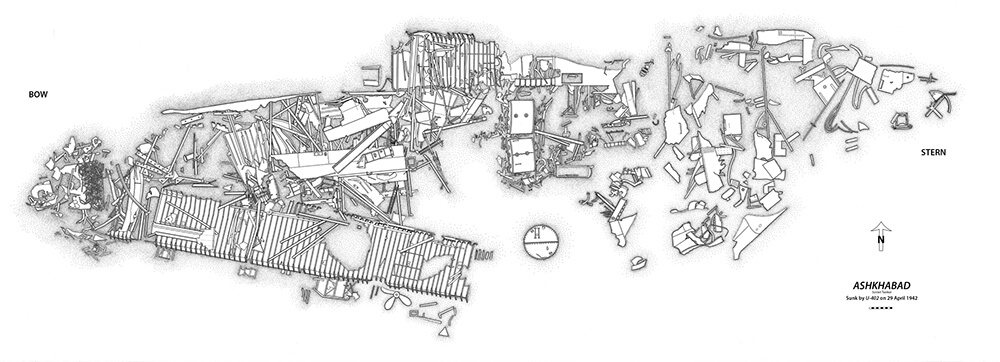
To view additional site plans click here.


